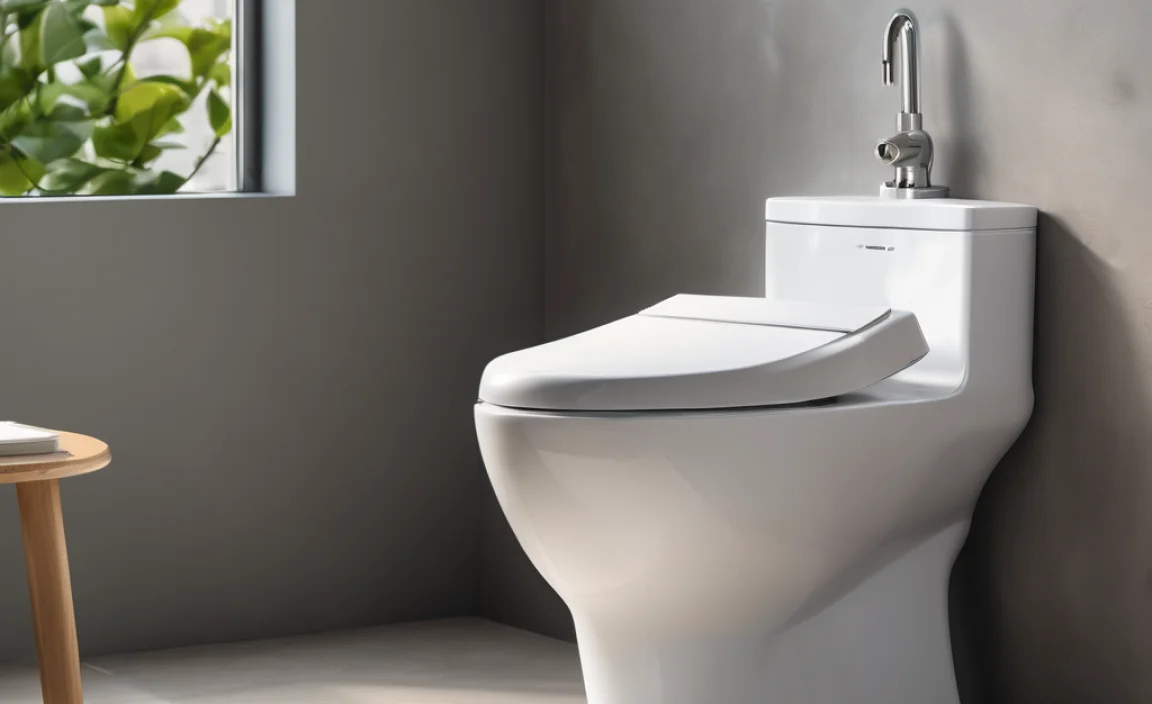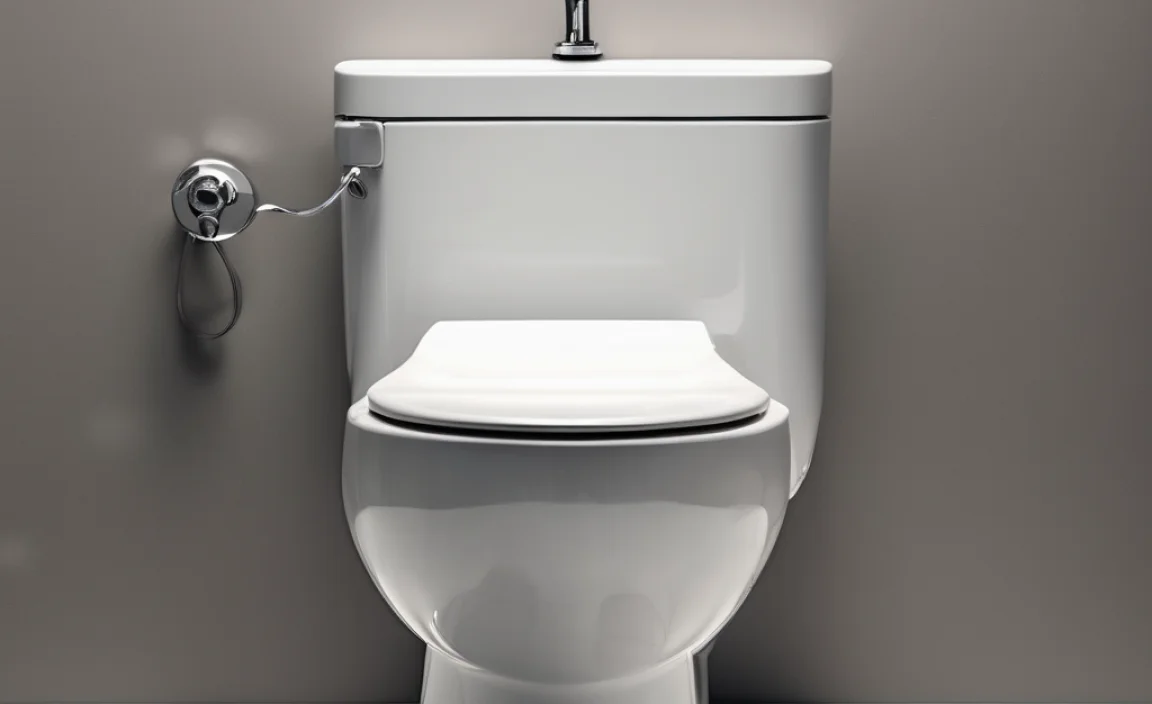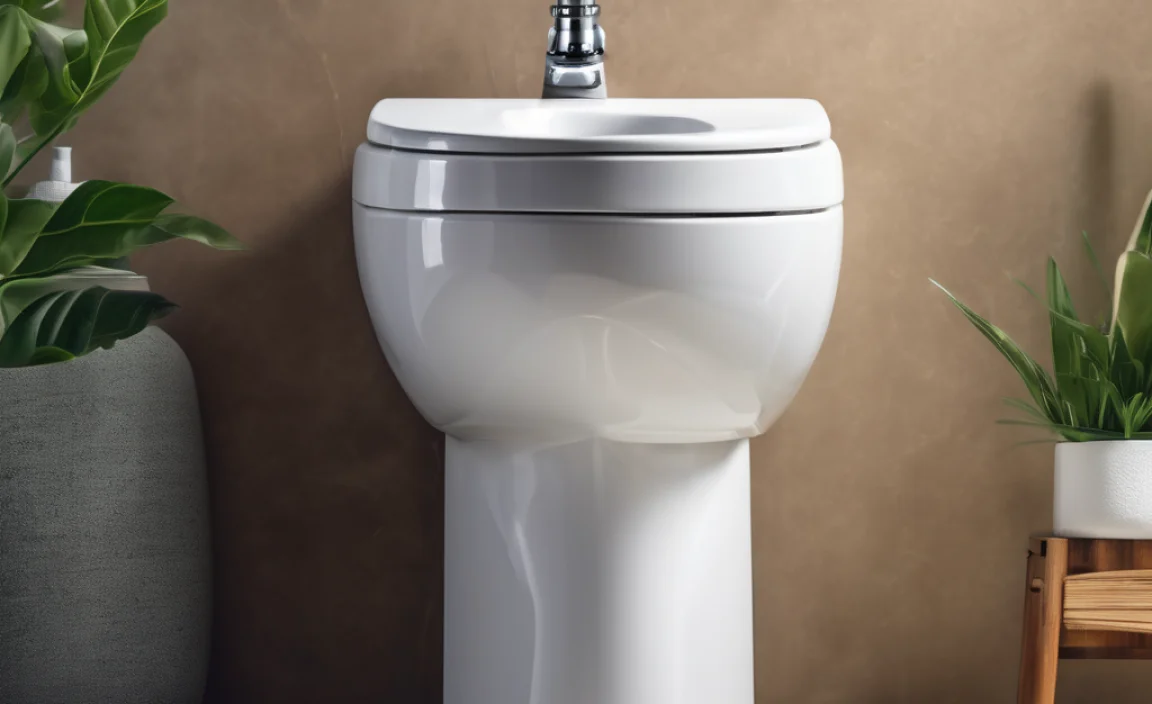Quick Summary: Most bidets don’t use water directly from the toilet tank. They connect to your fresh water supply line, usually the same one that feeds your toilet. This means you get clean, potable water for each use. Some advanced bidets have small, internal tanks to heat or pressurize the water, but they still refill from the fresh water line.
Ever wondered where the water comes from when you use a bidet? It’s a common question, and it’s understandable to be curious! The thought of using water from the toilet tank might not sound very appealing. Don’t worry, you’re not alone in wondering about this.
The good news is that most bidets use clean, fresh water. This article will walk you through exactly how bidets get their water, so you can confidently enjoy a cleaner, more hygienic bathroom experience. We’ll cover the different types of bidets and their water sources, step by step. Let’s get started!
Understanding Bidet Water Sources

Let’s dive into the specifics. There are a few different types of bidets, and each gets its water in a slightly different way. But generally, you can rest assured that the water used is clean and safe.
Direct Connection to the Fresh Water Line
The most common type of bidet connects directly to your bathroom’s fresh water supply line. This is usually the same line that supplies water to your toilet. This means the water you use in the bidet is the same clean water you use for drinking, washing your hands, and showering.
Here’s how it works:
- T-Valve Installation: A T-valve is installed on the existing water supply line, typically under the toilet tank.
- Connection: One end of the T-valve connects to the toilet tank, and the other connects to the bidet.
- Fresh Water Supply: When you activate the bidet, fresh water flows from the supply line, through the T-valve, and into the bidet nozzle.
This direct connection ensures that you’re always using clean, potable water. No need to worry about using recycled toilet water!
Bidets with Internal Tanks
Some advanced bidets have small, internal tanks. These tanks don’t store dirty water. Instead, they hold fresh water that’s used for features like heated water or pressure control. These tanks are constantly refilled from the fresh water supply line.
Here’s what you need to know:
- Heating: The internal tank heats the water to your desired temperature.
- Pressure Control: Some tanks pressurize the water for a more powerful spray.
- Constant Refill: The tank automatically refills after each use, ensuring a continuous supply of fresh water.
Even with an internal tank, the water source is still the same fresh water line that supplies your toilet and sink.
Step-by-Step Guide to Checking Your Bidet’s Water Source

Want to be absolutely sure about your bidet’s water source? Here’s a simple guide to help you check.
Step 1: Locate the Water Supply Line
First, find the water supply line connected to your toilet. It’s usually a flexible metal or plastic pipe running from the wall to the bottom of the toilet tank.
Step 2: Check for a T-Valve
Look for a T-valve installed on the water supply line. This valve splits the water flow, sending water to both the toilet tank and the bidet. If you see a T-valve, it means your bidet is connected to the fresh water line.
Step 3: Trace the Bidet’s Connection
Follow the hose or pipe from the bidet attachment back to the T-valve. This will confirm that the bidet is directly connected to the fresh water supply.
Step 4: Consult the Manual
If you’re still unsure, check your bidet’s manual. It should have information about the water source and installation process. Most manuals will clearly state that the bidet connects to the fresh water supply.
Step 5: Contact the Manufacturer
If you can’t find the manual or are still unsure, contact the bidet manufacturer. They can provide specific information about your model and its water source.
Types of Bidets and Their Water Connections

Let’s break down the different types of bidets and how they typically connect to the water supply.
| Type of Bidet | Water Connection | Key Features |
|---|---|---|
| Bidet Attachments | Directly to fresh water line via T-valve | Simple, affordable, easy to install |
| Bidet Seats | Directly to fresh water line via T-valve | Replaces existing toilet seat, heated seat, warm air dryer |
| Standalone Bidets | Separate plumbing connection to fresh water line | Dedicated fixture, adjustable water temperature and pressure |
| Travel Bidets | Manual fill with fresh water | Portable, handheld, no plumbing required |
As you can see, most types of bidets rely on a direct connection to the fresh water line. Travel bidets are the exception, as they are manually filled with clean water.
Benefits of Using Fresh Water in Bidets

Using fresh water in bidets offers several key advantages:
- Hygiene: Fresh water ensures a clean and hygienic cleansing experience.
- Health: Using potable water reduces the risk of bacterial contamination and infections.
- Comfort: Many bidets offer temperature control, providing a comfortable and refreshing cleanse.
- Eco-Friendly: Bidets reduce the need for toilet paper, which helps conserve trees and reduce waste.
These benefits make bidets a great addition to any bathroom.
Addressing Common Concerns About Bidet Water

Let’s tackle some common concerns people have about bidet water.
Concern: Is the Water Clean?
Answer: Yes! Bidets connect to the same fresh water supply as your sinks and showers. The water is clean and safe to use.
Concern: Can the Water Get Contaminated?
Answer: Modern bidets have built-in backflow prevention devices. These devices prevent water from flowing back into the fresh water supply, ensuring no contamination occurs. These devices are often mandated by local plumbing codes.
Concern: What About Power Outages?
Answer: Some advanced bidets require electricity for features like heated seats and warm water. During a power outage, these features won’t work, but the basic bidet function will still operate using the available water pressure.
Concern: Are Bidets Difficult to Install?
Answer: Most bidet attachments and seats are easy to install. They typically require only basic tools and can be installed in under an hour. Standalone bidets require professional plumbing installation.
You can find many helpful video tutorials online, such as this one from Bio Bidet.
Troubleshooting Common Bidet Water Issues
Sometimes, you might encounter issues with your bidet’s water supply. Here are some common problems and how to fix them.
Problem: Low Water Pressure
Solution: Check the water supply valve to ensure it’s fully open. Also, inspect the water supply line for any kinks or obstructions. If the problem persists, you may need to contact a plumber to check your home’s water pressure.
Problem: Leaking Water
Solution: Tighten all connections, including the T-valve and the bidet hose. If the leak continues, replace any worn-out washers or connectors. For persistent leaks, consult a plumber.
Problem: No Water Flow
Solution: Make sure the water supply valve is turned on. Check the bidet’s filter for any clogs. Clean the filter if necessary. If there’s still no water flow, check the water supply line for any blockages.
Problem: Water is Too Cold
Solution: If you have a bidet with a heating function, make sure it’s turned on and properly set. Check the power supply and ensure the bidet is receiving electricity. If the water is still too cold, contact the manufacturer for assistance.
Maintaining Your Bidet for Optimal Performance
Proper maintenance will keep your bidet working efficiently and hygienically.
- Clean the Nozzle: Regularly clean the bidet nozzle with a soft brush or cloth. Some bidets have a self-cleaning function.
- Check for Leaks: Inspect all connections for leaks and tighten them as needed.
- Replace Filters: Replace the bidet’s filter according to the manufacturer’s recommendations.
- Descale the Tank: If your bidet has an internal tank, descale it periodically to remove mineral buildup.
- Wipe Down the Exterior: Clean the bidet seat and attachment with a mild detergent and a soft cloth.
Regular maintenance will ensure your bidet remains in top condition.
Cost Considerations for Bidet Installation and Water Usage
Thinking about the costs involved? Here’s a breakdown of what you can expect.
Installation Costs
Bidet attachments are relatively inexpensive, ranging from $30 to $100. Bidet seats can cost between $100 and $600, depending on the features. Standalone bidets require professional installation, which can add to the overall cost. Professional installation can range from $200-$1000 depending on your existing plumbing setup.
Water Usage
Bidets use a small amount of water per use, typically less than a gallon. This is significantly less than the amount of water used to manufacture toilet paper. Over time, using a bidet can help you save money on toilet paper and reduce your environmental impact.
Electricity Costs
If your bidet has features like a heated seat, warm water, and a warm air dryer, it will consume electricity. The energy consumption is generally low, but it will add slightly to your electricity bill. Look for energy-efficient models to minimize these costs.
| Cost Type | Average Cost | Notes |
|---|---|---|
| Bidet Attachment | $30 – $100 | Easy DIY installation |
| Bidet Seat | $100 – $600 | Replaces existing toilet seat |
| Professional Installation | $200 – $1000 | For standalone bidets or complex installations |
| Water Usage per Use | Less than 1 gallon | Minimal impact on water bill |
| Electricity Usage | Varies by model | Consider energy-efficient options |
Choosing the Right Bidet for Your Needs
With so many options available, how do you choose the right bidet for your needs? Here are some factors to consider.
- Budget: Determine how much you’re willing to spend on a bidet.
- Features: Decide which features are important to you, such as heated seat, warm water, and air dryer.
- Installation: Consider whether you want to install the bidet yourself or hire a professional.
- Space: Measure the available space in your bathroom to ensure the bidet will fit properly.
- Reviews: Read reviews from other users to get an idea of the bidet’s performance and reliability.
By considering these factors, you can choose a bidet that meets your needs and budget.
FAQ About Bidet Water Sources
Here are some frequently asked questions about bidet water sources.
1. Does bidet water come from the toilet tank?
No, most bidets do not use water from the toilet tank. They connect directly to the fresh water supply line, ensuring clean and hygienic water for each use.
2. Is bidet water safe to use?
Yes, bidet water is safe to use. It comes from the same fresh water supply that feeds your sinks and showers, so it is potable and clean.
3. How do bidets heat the water?
Some advanced bidets have small, internal tanks that heat the water to your desired temperature. These tanks are constantly refilled from the fresh water supply.
4. Can the bidet water get contaminated?
Modern bidets have backflow prevention devices that prevent water from flowing back into the fresh water supply, ensuring no contamination occurs.
5. Are bidets easy to install?
Most bidet attachments and seats are easy to install and can be done yourself with basic tools. Standalone bidets require professional plumbing installation.
6. What happens if there’s a power outage?
During a power outage, bidets with features like heated seats and warm water will not be able to use those specific features, but the basic bidet function will still work using the available water pressure.
7. How much water does a bidet use?
Bidets use a small amount of water per use, typically less than a gallon. This is significantly less than the water used to manufacture toilet paper.
Conclusion
So, does bidet water come from the tank? The answer is a resounding no for most bidets! You can confidently enjoy the cleanliness and hygiene of a bidet knowing that you’re using fresh, potable water. By understanding how bidets connect to your water supply and following simple maintenance tips, you can ensure your bidet provides years of comfortable and reliable service.
Now that you know the facts about bidet water sources, you can shop for the perfect bidet with confidence. Enjoy a cleaner, greener, and more comfortable bathroom experience!


